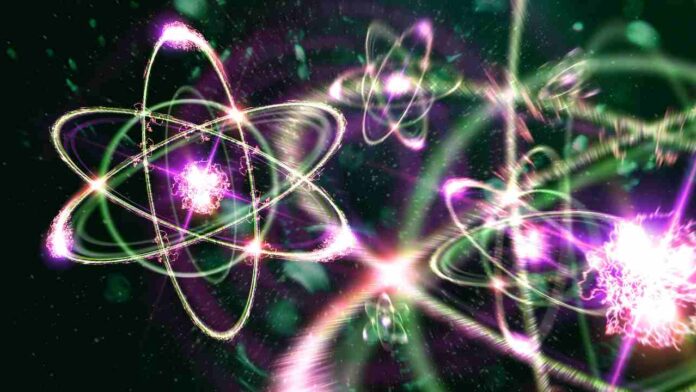Nitrogen-9 is the first known occurrence of a nucleus that decays by emitting five protons from its ground state, and it has just two neutrons to its seven protons. In a recent study for Physical Review Letters, Robert Charity, a research professor of chemistry in Arts & Sciences at Washington University in St. Louis, described the new light isotope of nitrogen.
Located on the proton-rich border of the Chart of Nuclides, the extremely transient nitrogen-9 nuclide is very close to the boundary between nuclear and non-nuclear states. Charity and his associates established the experimental evidence for nitrogen-9 from data collected at the National Superconducting Cyclotron Laboratory.
The nucleus of nitrogen-9 consists of an alpha particle, which is a tightly bound cluster of two protons and two neutrons, surrounded by five free protons. Their interactions temporarily hold this group together. A single freed proton first escapes, then a pair of protons are released simultaneously, and a third pair is released a short while later.
“The decay of Nitrogen-9 is like opening a set of nesting dolls; each decay unveils another nuclide, which also decays by the emission of a single or a pair of protons,” Charity stated. The quantum mechanics of open or unbound many-body systems would be well-tested in the presence of such an exotic system, according to the authors. Theorists in open quantum systems from WashU, Michigan State University, and Fudan University in China collaborated on this study.
At the same time that Charity and his colleague Lee Sobotka, a professor of chemistry and physics in Arts & Sciences, described Nitrogen-9, they published a paper in Physical Review C detailing how to analyse the kinds of experiments that yield results on genuinely odd nuclei.
Those “elements we have around us” are “produced via a set of mechanisms that work through intermediates that we do not have around us,” Sobotka explained. These intermediates are precarious because of their extremely atypical neutron-to-proton ratios and their instability. Both the structure of these nuclei and the reactions that create them are the focus of our work.
Scientists can better comprehend the abundance and scarcity of certain isotopes on Earth by learning about the unstable nuclear configurations that give rise to them through various processes.
Reference:
R. J. Charity et al, Strong Evidence for N9 and the Limits of Existence of Atomic Nuclei, Physical Review Letters (2023). DOI: 10.1103/PhysRevLett.131.172501
R. J. Charity et al, Invariant-mass spectroscopy in projectile fragmentation reactions, Physical Review C (2023). DOI: 10.1103/PhysRevC.108.044318
